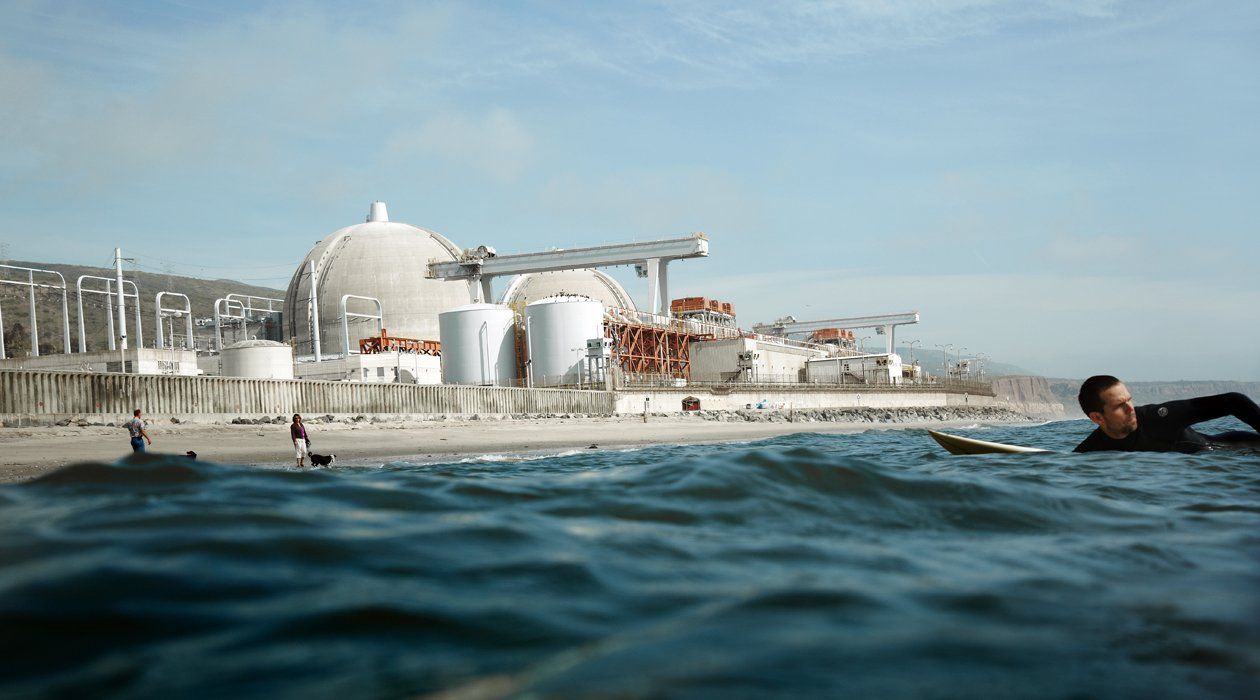
The earthquake, tsunami, and nuclear crisis in Japan have filled airwaves, Twitter feeds, Facebook posts, and media reports with countless terrifying phrases, from "core meltdown" and "radiation cloud" to "9.0" and "10,000 dead." But for regions vulnerable to quakes and tsunamis—especially if, like Japan, they hit the trifecta of having nuclear plants in the crosshairs of those natural disasters—there have been no scarier words than these: Japan is the most earthquake- and tsunami-prepared country on the planet.
This, we now know, is what "well prepared" looks like: total loss of power at the Fukushima Daiichi nuclear reactor, which deprived the reactor core and spent-fuel pools of cooling water. Fires and explosions that released radioactivity. Sea walls built for a "worst case" tsunami swamped like a child's sandcastle. No running water, electricity, or heat for thousands of the 700,000 refugees, who in some shelters lived on one and a half rice balls a day.
"In light of the record-breaking earthquake in Japan, how can we think we are prepared?" says Charles Ferguson, a nuclear expert and president of the Federation of American Scientists. No place in the U.S. is asking that with greater urgency than the West Coast and, in particular, California. The state, which sits at the epicenter of the nation's most intense seismic activity, has two oceanside nuclear-power plants near active faults (two of which were discovered only after the plants were built) and in the bull's-eye of tsunamis barreling across the Pacific.
Assessing the risks to California—or any other vulnerable locale—and its chances of withstanding them comes down to two calculations: the likelihood of a particular disaster occurring and the adequacy of mitigation and recovery plans. California has a 99.7 percent chance of being hit by an earthquake with a magnitude of 6.7 or greater within the next 30 years, explains Richard Allen, associate director of the Seismological Laboratory at the University of California, Berkeley. The most likely sites are along the Hayward fault, which runs through the San Francisco Bay Area, and the southern San Andreas, east of Los Angeles. "We think that the longest sections of the faults that can rupture are equivalent to a magnitude-8 earthquake," says Allen. An 8.0 would cause some $100 billion in damage, he says, and kill hundreds and possibly thousands—"way beyond the scale of what people think is possible in a modern, industrial state."
Yet states are falling woefully short on preparations needed to cope with a natural or man-made nuclear disaster (such as terrorists attacking a nuclear plant), according to an analysis just released in the journal Disaster Medicine and Public Health Preparedness. Most of the 38 state health departments responding to a survey had few or no plans for public-health surveillance in the event of a radiation leak. Overall, the average "radiological preparedness score" for 26 states with a nuclear plant was 4.76 out of 10. The authors wouldn't release individual states' responses, and the California Public Health Department told NEWSWEEK that although it had a plan and holds drills, it was not aware of the study and did not participate. As for radiological disaster, says spokesman Mike Sicilia: "We are as prepared as any other state is."
For years, Allen and colleagues have been developing an earthquake early-warning system in California, placing instruments in many of the state's fault lines. Readings feed into a prototype system that, since 2006, has detected hundreds of quakes and calculated their magnitude, all in seconds to tens of seconds before they hit. That may not sound like an "early" warning, but it's time enough for people to get under a table, for trains to stop before they speed over damaged tracks, and for nuclear plants to initiate emergency procedures. With another $80 million of equipment, the system would be ready to go live in five years. But federal budget cuts threaten to zero out the work.
Such projects may win more support now, given that both of California's nuclear-power plants sit near faults. Diablo Canyon, 12 miles southwest of San Luis Obispo, is near the Hosgri fault and (as was discovered in 2008?) the Shoreline fault. San Onofre, in San Diego County next to I-5, sits near the Oceanside and Newport-Inglewood/Rose Canyon faults. Because the Nuclear Regulatory Commission requires that a nuclear plant be able to withstand the most severe natural phenomena in the historical record, with a safety margin, both were built (or retrofitted) to withstand a 7- to 7.5-magnitude earthquake, the strongest quake either plant is likely to experience, says seismologist Thomas Jordan of the University of Southern California.
Both of California's plants were designed in the 1970s, and show it. In 1973 Pacific Gas & Electric, which owns Diablo Canyon, had to alter the initial specs when scientists discovered an offshore fault 2.8 miles away. More worrisome, some scientists are not sure the "worst-case earthquake" is as bad as it could get. The 1906 San Francisco quake measured 8.3, "so we have a quake that was larger than their design basis," says Robert Alvarez of the Institute for Policy Studies, a former Department of Energy official. And Japan's 9.0 exceeded what scientists had calculated was possible. "Nature doesn't necessarily heed the speculation of science," says Alvarez. Adds Bill Ellsworth of the U.S. Geological Survey, "We know that earthquakes as large or larger than [Japan's] have occurred in the past in the U.S. and almost certainly will occur in the future."
The crisis at Fukushima has shown that one of the greatest risks to a nuclear plant comes from the loss of power, which leaves the facility unable to circulate cooling water to the core and spent-fuel pools. In Japan, that calamity arose when the quake crippled the electric grid and the tsunami knocked out backup generators. California is thought to be less likely to suffer the one-two punch of an earthquake followed by a tsunami. Off its coast are mostly "strike slip" faults, where one tectonic plate grinds along another. This kind of fault is less likely to cause a tsunami than is a subduction fault, where one plate dives under another and can cause the huge vertical displacement of water that initiates the monster waves. Nevertheless, it is "possible for a strike-slip fault to generate major tsunamis under certain conditions," concluded a 2009 report by the Nuclear Regulatory Commission. And the Cascadia subduction fault, which begins off northern California, is thought capable of causing a tsunami.
Diablo Canyon sits on a rise 85 feet above the ocean, beyond reach of what scientists calculate is the largest possible tsunami, says Jim Becker, PG&E's site vice president at the reactor. San Onofre is 50 feet above the sea, and behind a concrete tsunami wall 30 feet high, 50 percent higher than the largest tsunami thought possible there. Both store cooling water at higher elevations; if everything else fails, gravity should work. Of course, a complete power loss can be caused by forces other than a quake and tsunami—including terrorism. "We are striving to learn from the Japanese event," says Becker. "We're not saying we are totally different. There will be lessons learned that can help us improve, and right now we're doing a detailed review of our emergency procedures."
Some Californians believe that can't happen soon enough. "We have been told repeatedly that nuclear plants can withstand seismic events," says state Sen. Sam Blakeslee. "But a 2007 earthquake in Japan caused a radioactive leak [at one plant there], and now we're in the midst of this catastrophe. It dispels the notion that the plants are impervious." He has called for an independent study of the risk posed by "dangerous faults in close proximity to California's aging reactors."
In one important respect, the threat in the U.S. might be even greater than what befell Japan. Because the U.S. has failed to establish a permanent nuclear-waste depository, the NRC allows plant operators to move from "open rack" configurations, which cool the rods most effectively, to a "dense pack" design that eventually fills pools "almost wall to wall," argues Alvarez. As a result, said physicist Edwin Lyman of the Union of Concerned Scientists at a press conference, "it might be just hours [before spent-fuel rods begin releasing radioactivity] if there were a seismic event or terrorist attack." Diablo Canyon has 1,126 tons of spent fuel; San Onofre, 1,430 tons.
In a fortuitous coincidence, March 21–27 is Tsunami Awareness Week. Officials will hold media briefings about what they would do if one of the waves headed for the West Coast, such as sounding sirens, broadcasting warnings, and activating a reverse-911 system. A few weeks ago that might have sounded sufficient; Japan, after all, had a similar system…and it is "the most earthquake- and tsunami-prepared country on the planet." In the wake of the triple disaster there, such preparations seem as inadequate as man's other puny efforts to hold back nature's rage.
With Claudia Kalb and Pat Wingert in Washington
Uncommon Knowledge
Newsweek is committed to challenging conventional wisdom and finding connections in the search for common ground.
Newsweek is committed to challenging conventional wisdom and finding connections in the search for common ground.
About the writer
To read how Newsweek uses AI as a newsroom tool, Click here.






